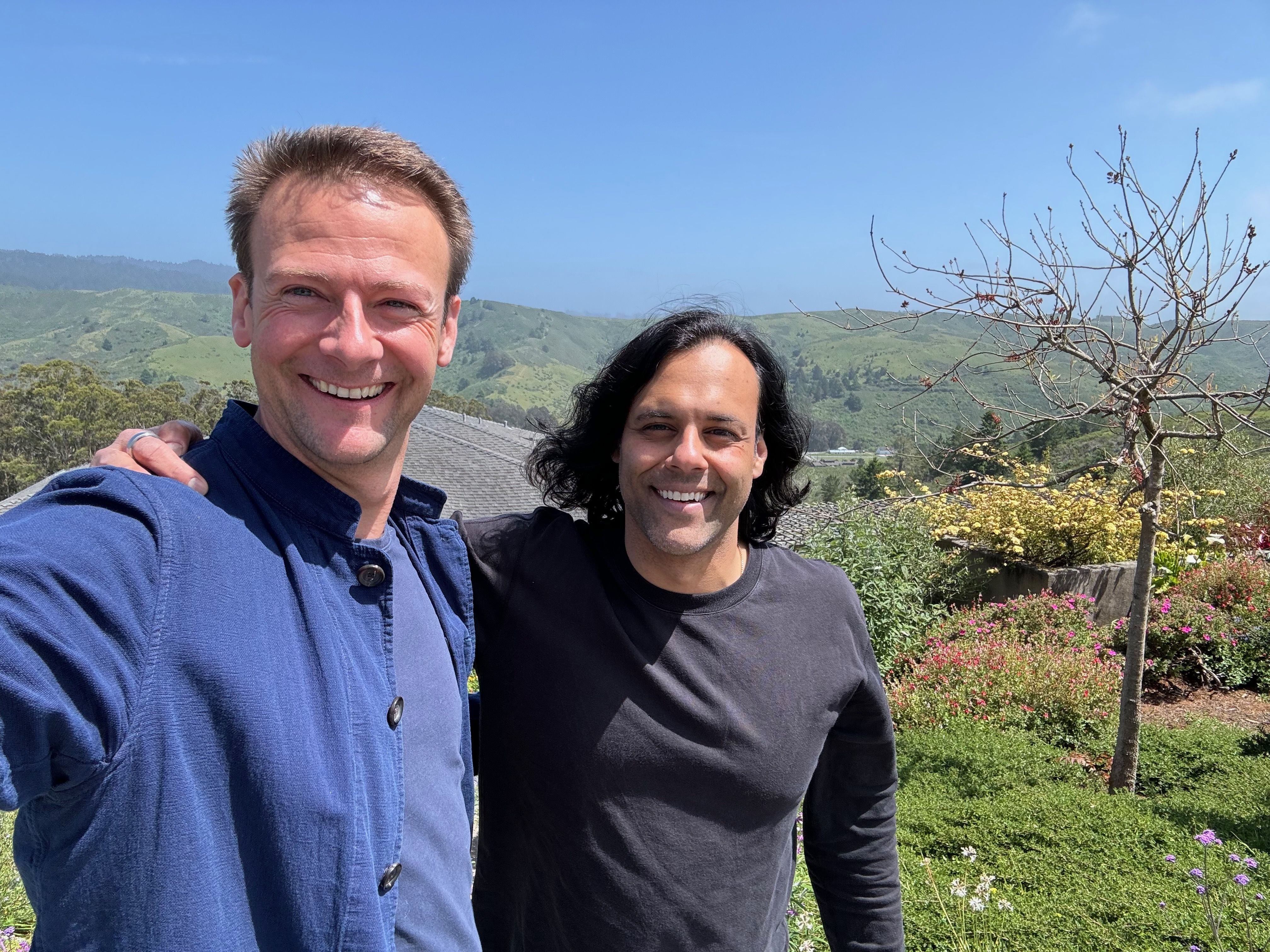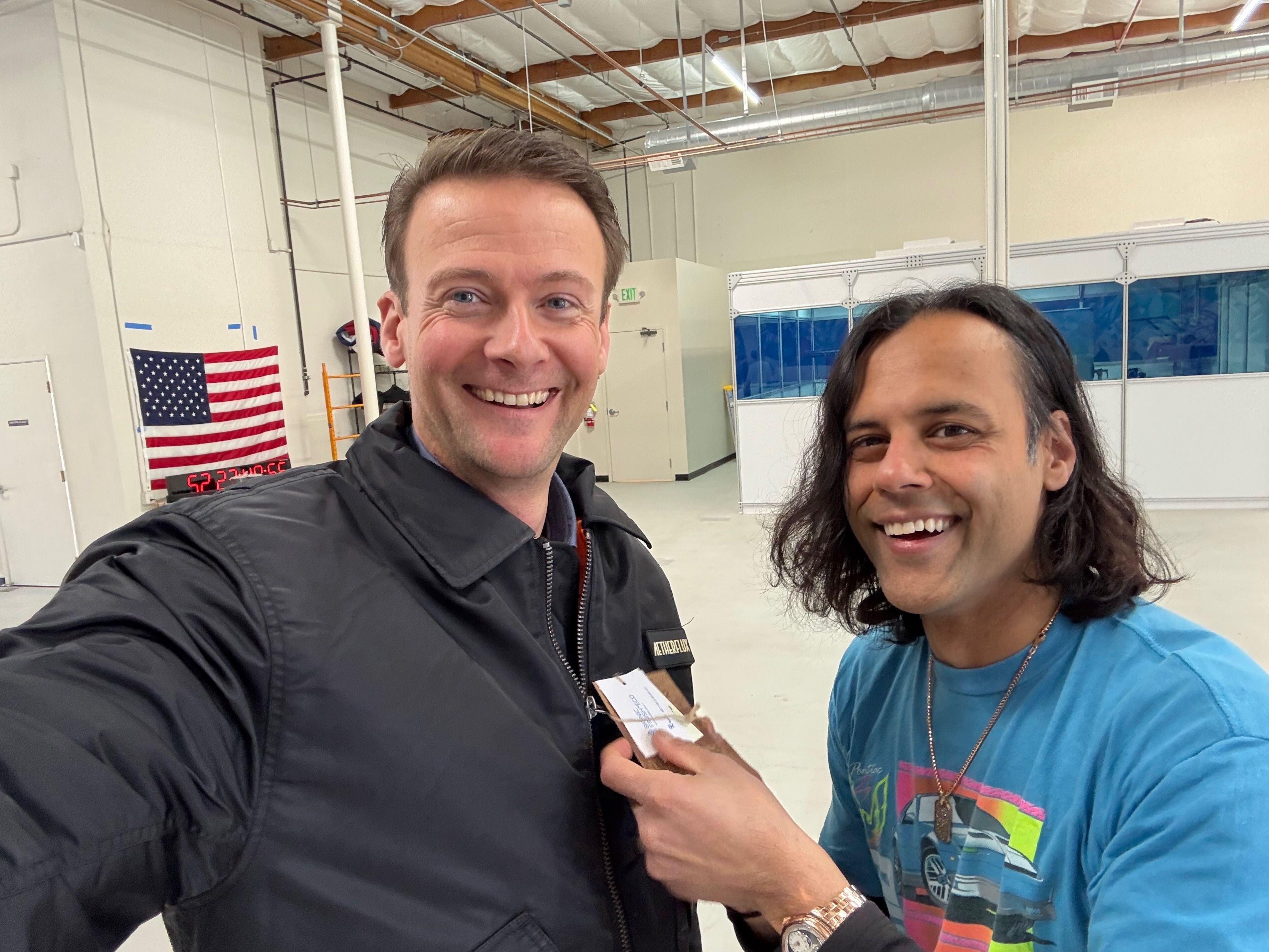Delivering Energy to Planet Earth: Our Investment in Aetherflux

In 2015, I attended the wedding of my friend Baiju Bhatt. It was a beautiful day for many reasons, but one moment in particular stayed with me. About halfway through his speech, Baiju looked at the crowd and declared, only half-joking: “My next company after Robinhood will be a space company.” Then, finding me in the audience, he added: “And you will fund it.”
We all laughed, but I knew there was truth to his words. Anyone who knows Baiju knows his love of space runs deep. The son of a NASA scientist, he studied physics and math at Stanford, meeting his Robinhood co-founder Vlad Tenev during a summer research program. Space has never been a side project for Baiju; he has always talked about it as the ultimate market opportunity. If anything, you could say building Robinhood was the detour.
Fast forward to May 2024—multiple lifetimes in the arc of Robinhood—and I found myself at Baiju’s home. He’d invited me to stop in for coffee on my way to an Index dinner in San Francisco. He had recently stepped down from his role at Robinhood, and it had been a while since we caught up. As he told me about his new venture, thirty minutes turned into an hour turned into half a day. I was so late leaving, I almost missed the dinner.
On the surface, the business he described seemed wildly complex—launching satellites with solar panels into orbit and wirelessly transmitting power around the globe—to say nothing of the regulatory and compliance challenges. But what struck me was how methodically Baiju broke it all down: how the physics would work, how the optics would work, how the system would assemble and launch, and how it would deliver power precisely where it’s needed. Piece by piece, he made it legible, even to a generalist investor like me. Very quickly, it became clear this wasn’t theoretical. He had put in the work to make it practical and executable. And he spoke about it with a conviction that was impossible to ignore.
At Index, we double down on working with exceptional people. Baiju may be young in Earth years, but as an entrepreneur, his experience is light-years ahead. He knows what it takes to build a complex, regulated company at scale. He’s learned to anticipate problems before they surface, to surround himself with the best people, and to stay focused on the mission when things get hard. He trusts us to help him build an enduring company, and we trust him to navigate the risks and opportunities of a business as ambitious and technically challenging as this one.
The problem Aetherflux is tackling is as massive as it is urgent. Humanity’s energy needs keep growing, but while we’ve made progress on generation—solar, wind, geothermal—two things remain stubbornly hard: storing energy and getting it where it’s needed most. Electricity is difficult to store and even harder to deliver to the right places: ships moving across oceans, remote bases and settlements, areas cut off by natural disasters.
Meanwhile, solar power is abundant, but it comes with strings attached—day and night cycles, weather, and inefficiencies at scale. In orbit, those constraints largely disappear: the sun shines nearly continuously. The challenge is harnessing that energy at scale for use on Earth.

Index's Jan Hammer with Baiju Bhatt of Aetherflux
The idea of space-based solar power has been around for decades. What’s remarkable about Baiju and his team’s approach is how they’ve simplified the architecture to make it viable today. Early concepts from the 1970s relied on massive geostationary satellites positioned 36,000 kilometers above Earth, requiring enormous, kilometer-scale solar arrays and astronomical launch costs. Aetherflux takes a fundamentally different path, operating in low Earth orbit (LEO) just a few hundred kilometers up. The satellites are smaller, cheaper to launch, and pass over the same point multiple times a day, creating targeted windows to deliver power when and where it’s needed. And instead of betting on unproven science, they’re assembling the system from existing technologies, launching on SpaceX rockets that already fly weekly, and using off-the-shelf satellite hardware and standard solar panels.
Equally impressive is the team Baiju has been quietly assembling. Not only has he pulled in a number of the early Robinhood early team, he’s also brought together engineers and researchers from NASA/JPL, SpaceX, Lockheed Martin, Anduril, and the U.S. Navy. These are experts who’ve spent their careers solving some of the hardest problems in aerospace, defense, and advanced manufacturing. The result feels less like a startup team and more like the Tune Squad from Space Jam, built for a challenge where the stakes are literally out of this world.
Of course, the market path is still evolving. Investing at this stage always carries open questions—who the first customers will be, what the business model looks like at scale, how quickly the constellation can grow. To start, Aetherflux is focusing on supporting the U.S. Department of Defense’s complex and urgent energy challenges. As part of that effort, the DoD’s Operational Energy Capability Improvement Fund (OECIF) approved Aetherflux for funding in FY25 to develop a proof of concept demonstrating power transmission from LEO. Over time, as the constellation scales, the opportunity grows—to multinationals, to shipping, and eventually to consumers. It’s not hard to imagine a future where Aetherflux powers not just remote outposts, but helps build a more resilient global energy network. That’s a big part of what makes this opportunity so compelling. At its core, Aetherflux isn’t just about space or satellites. It’s about democratizing access—something Baiju knows a thing or two about.
We’re incredibly proud to be leading Aetherflux’s $50M Series A. This is a big bet, but it’s the kind of bet we like—on a founder we know and trust, tackling a problem that matters, with a plan grounded in reality. The future of energy is in space. Now let’s go catch some rays.
Published — April 2, 2025
-

-
